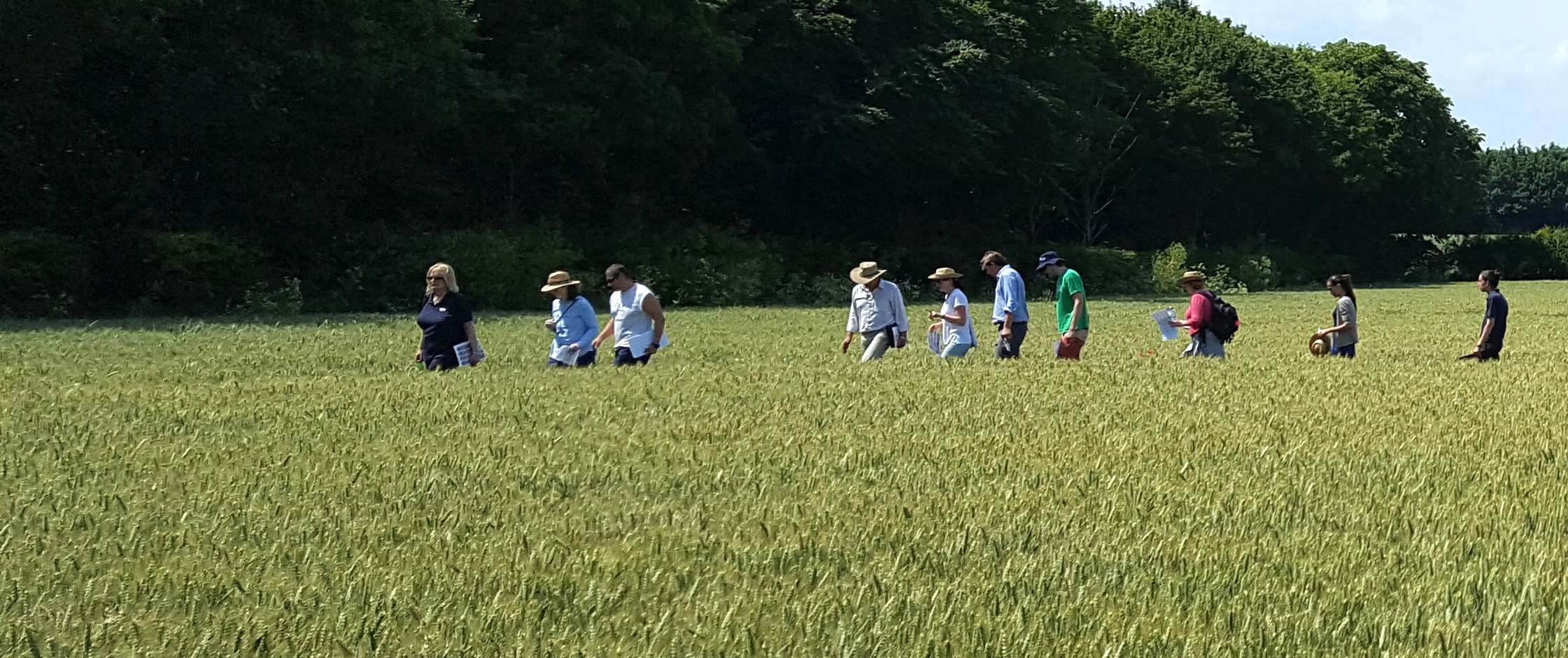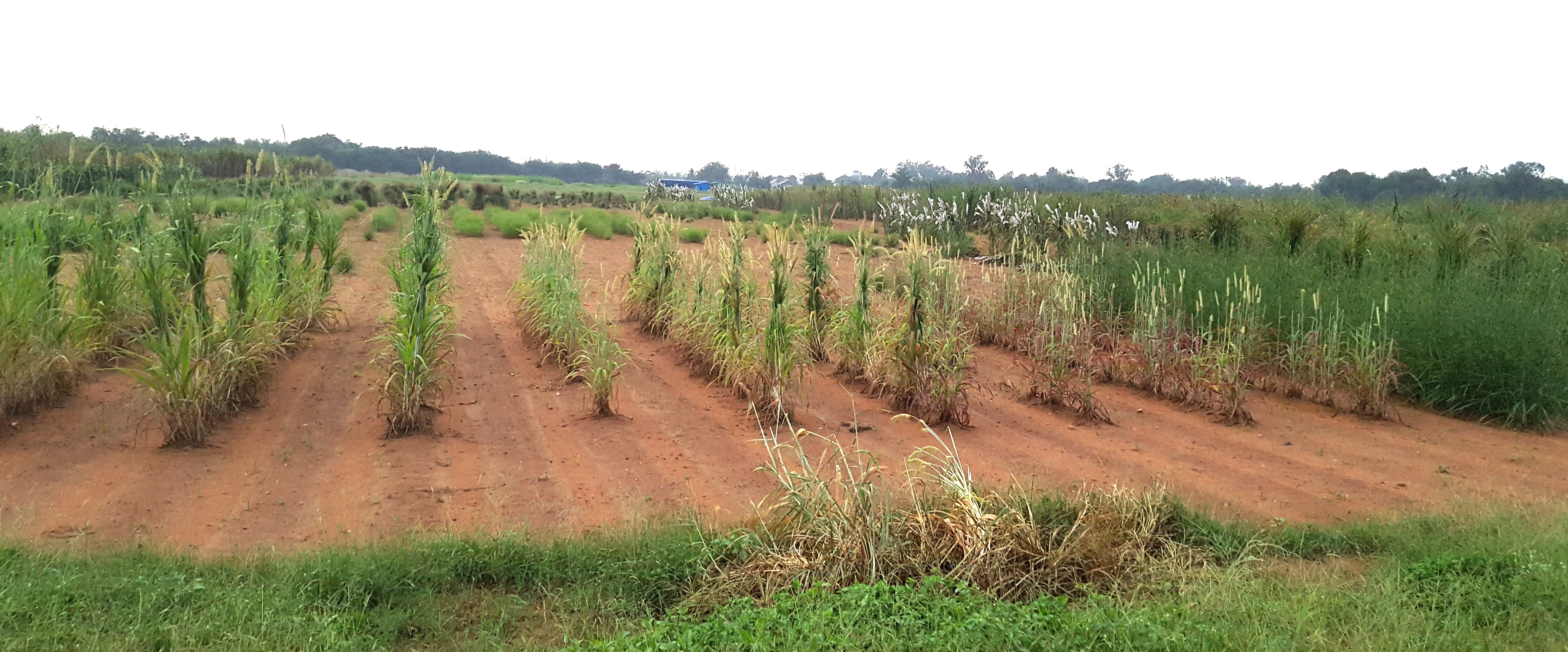
Submitted by Administrator on Fri, 01/06/2018 - 09:39
By contributing her expertise on nitrogen to a chain of skills, Stephanie aims to translate her fundamental science into positive benefits for farming and for the environment.
Meet Dr Stéphanie Swarbreck
She’s a scientist who wants to address major agricultural challenges, but knows she can’t do it alone. Stéphanie Swarbreck has seen the issues causes by excess fertiliser use in her home country, and through her research she’s learning about how nitrogen is taken up and used in crops, both in Europe and on the other side of the world.
Q: Where are you from?
A: I’m from Brittany, the western part of France.
Q: Tell me something about the food there
A: We use a lot of buckwheat. Brittany is where crêpes, our French pancakes, originated and we use buckwheat to make the savoury ones. I love to eat them, and I make them at home now I have a galetière – the big flat pan. Buckwheat is interesting in itself. Wheat, rice and maize are the three major crops worldwide and a lot of research has focused on them. But if a pathogen comes along that’s capable of wiping one of them out, we’re in big trouble. Increasing the diversity of the crop species we rely on is really important, and buckwheat could be an alternative.
Q: Why are you here?
A: I came to Cambridge’s Department of Plant Sciences to work on a project looking at the effects of blackgrass on wheat. Blackgrass has been listed as one of the major threats to wheat production in northern Europe. Then I got involved in a project that tries to reduce the crop nitrogen requirement, called CINTRIN - the Cambridge-India Network for Translational Research in Nitrogen. It’s a collaboration between Cambridge’s Department of Plant Sciences, the Sainsbury Laboratory (SLCU), ADAS, and the National Institute of Agricultural Botany (NIAB). Tina Barsby, the CEO of NIAB, is the Principal Investigator for the project.
Q: What’s your research purpose?
A: My objective within CINTRIN is to identify the characteristics of the wheat varieties that use nitrogen fertiliser really efficiently, so we can select future varieties that will use less nitrogen. We run field experiments with ADAS. They grow wheat under six different levels of nitrogen, to try and work out the amount that produces the highest yield, and also the highest profit. Typically as you add nitrogen the yield increases, but at some point this levels off. You see variations across different varieties, but varieties aren’t traditionally selected under low nitrogen availability.
Q: What’s the problem with nitrogen fertiliser?
A: When I talk to farmers in the UK, they tell me that nitrogen is the biggest cost of wheat production. They know that is has around a 60% efficiency. The other 40% isn’t going into fertilising the crop, but being washed away into water-courses. This eutrophication causes algal bloom, which can radically change ecosystems. It’s happening in Brittany where nitrogen applied to the fields runs off to the coast. As a result some of the beaches get covered in algae, which produce toxic gas when they decompose, so they’re removed by tractors. The system must be improved so that producing high yields of wheat becomes cheaper and more sustainable. Applying large amounts of nitrogen to fields is not sustainable because it’s having really bad effects on the environment.

CINTRIN field trial in the UK; a collaboration with NIAB and ADAS testing 52 wheat varieties under 6 different nitrogen levels.
Q: So what has blackgrass got to do with this?
A: Blackgrass is another major problem caused by our modern agricultural practices, including the use of high levels of nitrogen for wheat production. It’s not easy to control and has developed resistance to a number of broad spectrum herbicides. If there are just a few individual blackgrass plants in a square metre, they can decrease the wheat yield by about 10%. It’s a problem because each blackgrass plant produces thousands of seeds, so if it’s there one year, then the following year it will be even more difficult to control. 100 years ago blackgrass wasn’t a major issue. It has become an issue because we’ve applied lots of nitrogen as fertiliser, we’re using shorter varieties, and because it has developed herbicide resistance.
Q: Where are you going?
A: I work with great collaborators in India at Punjab Agricultural University (PAU), the National Institute for Plant Genome Research (NIPGR), and the International Crops Research Institute for the Semi-Arid Tropics (ICRISAT). I went to Delhi last October for a conference attended by our collaborators and other scientists working on similar projects focusing on nitrogen. While I was in India I also went to ICRISAT, and we went out to the fields to look at the sorghum being grown under different levels of nitrogen. Meeting face to face makes it easier to work together - it’s about strengthening the links.
In India and China, the amount of nitrogen used for agriculture has steadily increased over the past 70 years, and now farmers are applying large amounts to their fields. Their governments subsidise the nitrogen fertiliser, so the farmers get it for free or very cheaply. You can understand the logic. It’s an easy way to improve yields, to grow enough food for a large population. But in certain places they’re applying so much nitrogen that it becomes toxic.

Fields at ICRISAT in India where the response of different sorghum genotypes to increased nitrogen levels is being tested.
Q: Do you feel part of something bigger than yourself?
A: I did my PhD on nitrogen use in wheat, and part of the reason I wanted to be working on plants was so I could contribute to bigger projects. CINTRIN is a translational project; we’re aiming to translate basic science into improvements in the field. Scientists here at the University are doing fundamental developmental research and characterising the plant physiology. Our collaborators at NIAB are working on genetic modification. And ADAS is an independent consultancy providing advice to farmers. We’re all doing very specific elements of the project, but together we’ve created a pipeline that will allow translation to happen. I couldn’t do that on my own. Being part of a big project gives me different perspectives and ideas, and it helps to see the links between basic science and applications in the field.
Q: What’s the one piece of advice you’d give others who want to follow in your footsteps?
A: To do something that interests you, and that you think is going to be helpful.
Find out more:
The CINTRIN project is funded by the Newton-Bhabba Trust.

